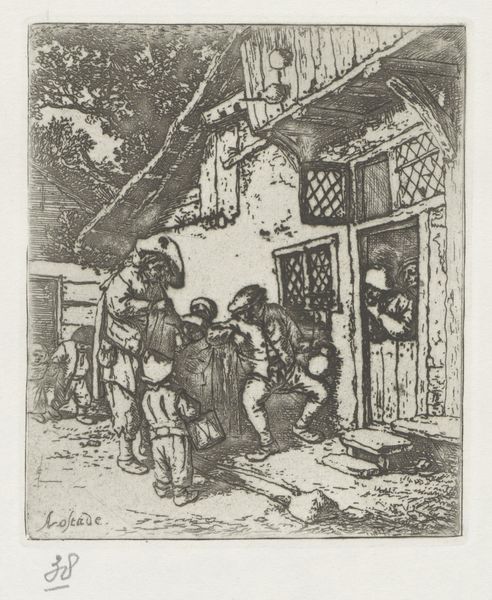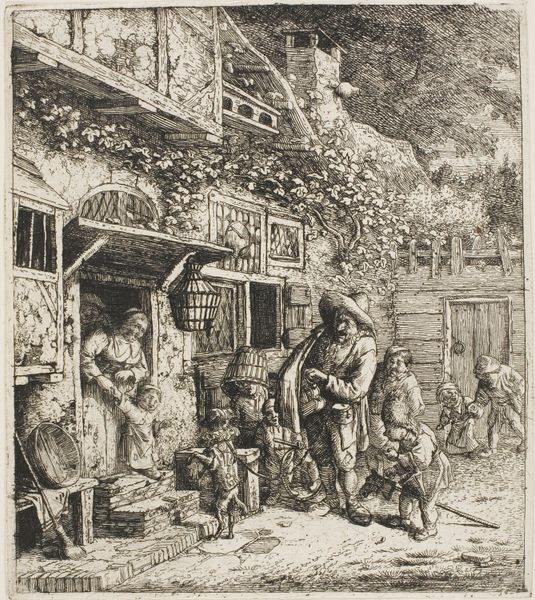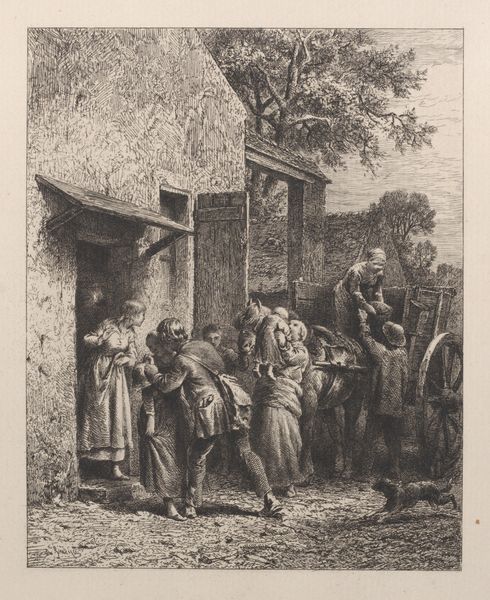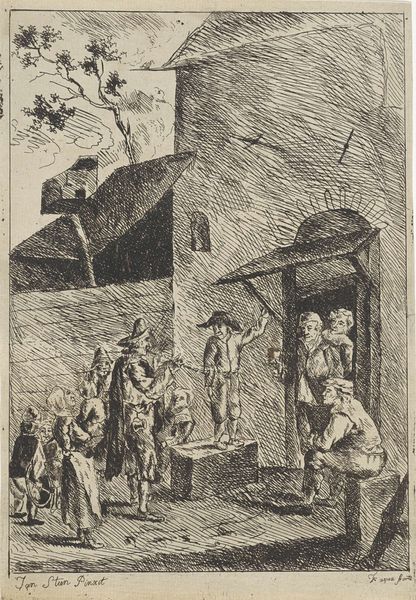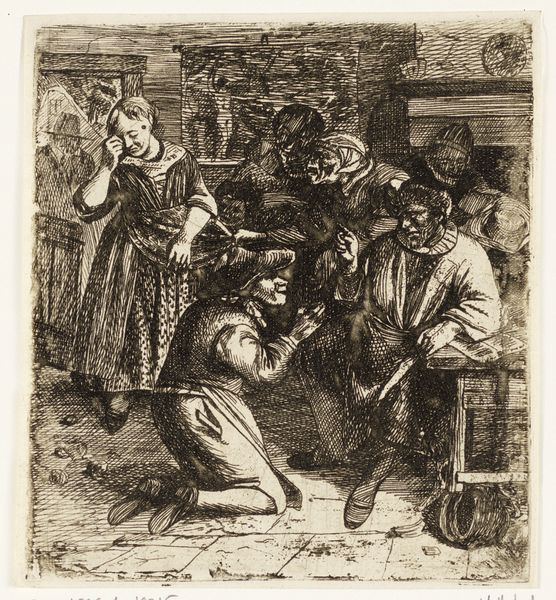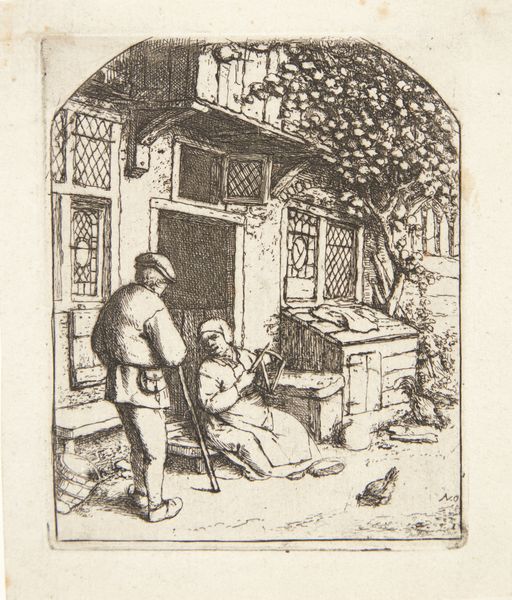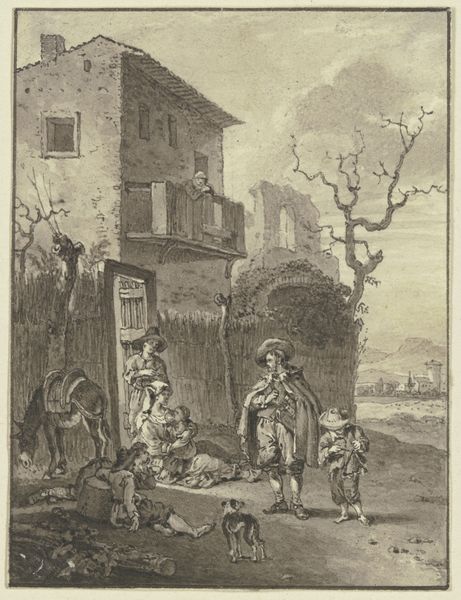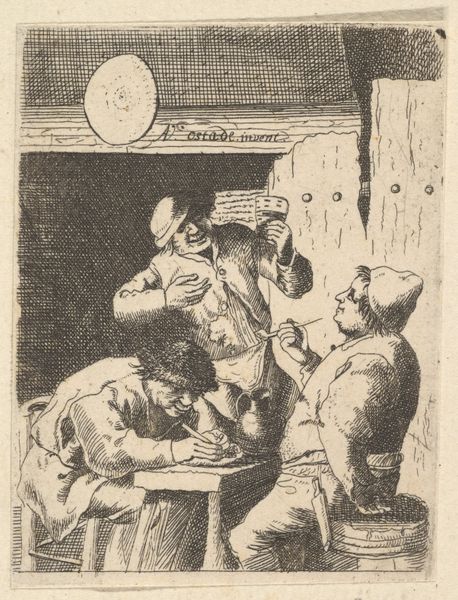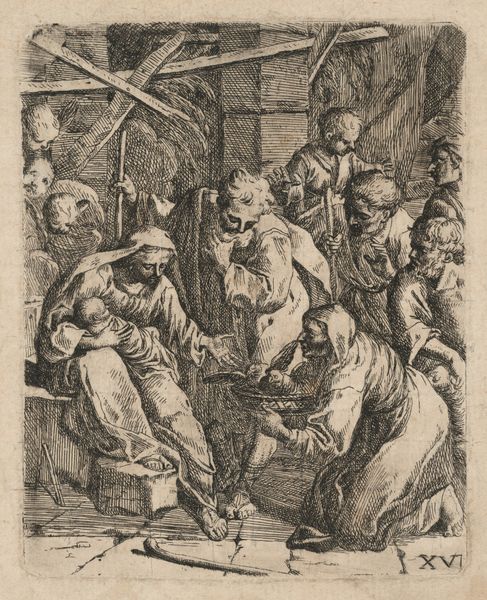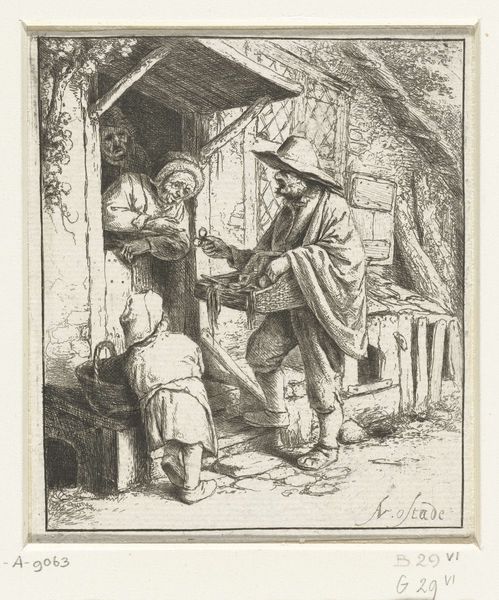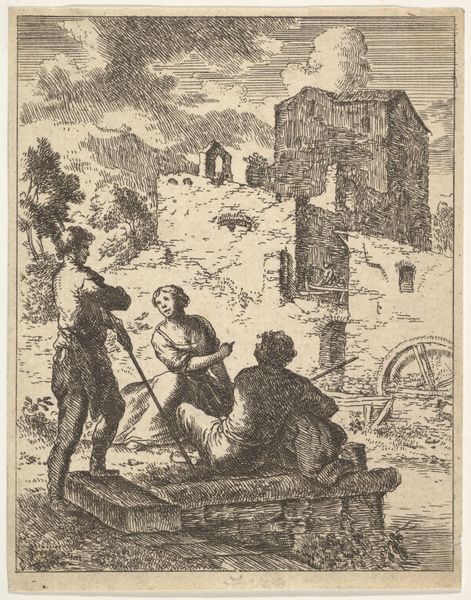
drawing, print, etching, ink
#
drawing
#
narrative-art
#
pen drawing
#
dutch-golden-age
# print
#
etching
#
ink
#
genre-painting
Dimensions: Plate: 4 1/8 × 3 7/16 in. (10.4 × 8.8 cm) Sheet: 4 3/4 × 4 1/8 in. (12.1 × 10.4 cm)
Copyright: Public Domain
Editor: Here we have Adriaen van Ostade's "Traveling Musicians," estimated between 1610 and 1685. It's an etching in ink, and the scene feels so lively despite the monochrome palette. What’s your take on this bustling performance? Curator: Well, consider the social context of 17th-century Netherlands. Genre scenes like this gained popularity as the middle class expanded, seeking reflections of their everyday lives. The public role of art shifted towards depicting these narratives. How do you think this etching fits into that cultural landscape? Editor: It seems to be celebrating the joy of common life, with its musicians entertaining a crowd outside what looks like a modest home. Curator: Precisely. Now, consider the political undertones. Was it simply capturing reality, or perhaps idealizing a certain simplicity? Etchings, like prints, also had much wider circulation than unique artworks, and so the messages or cultural information they contained spread more broadly too. Editor: So, the print format itself had a political effect? The etching is interesting, almost a snapshot, do you see it challenging ideas about fine art versus everyday art? Curator: It certainly blurred the lines, offering an accessible art form with accessible subjects. That accessibility played a crucial role in shaping public taste and expectations of art's purpose, it really places art in service to society! I wonder, reflecting on this, do you see parallels in contemporary art practices? Editor: That's an interesting way of thinking about it; maybe street art would be a valid contemporary connection to make about reaching everyday society through public and accessible artwork. It enriches my view quite a bit, especially recognizing its historical context.
Comments
No comments
Be the first to comment and join the conversation on the ultimate creative platform.
